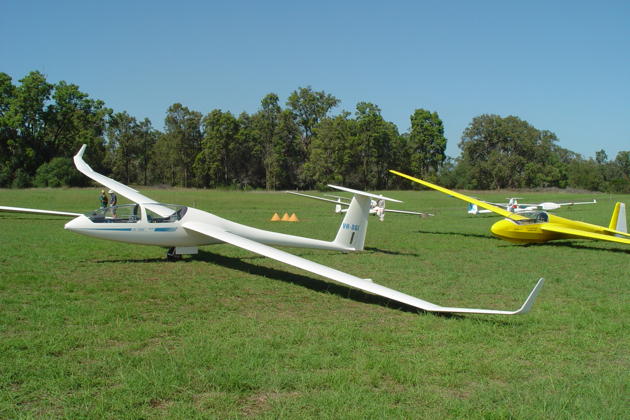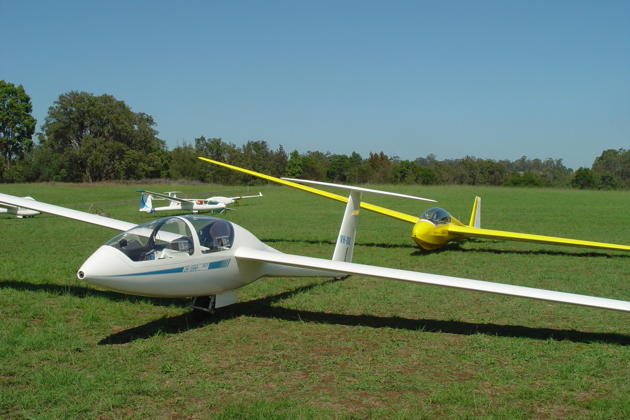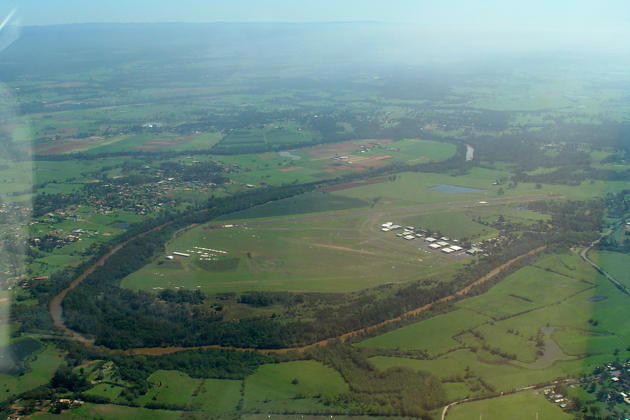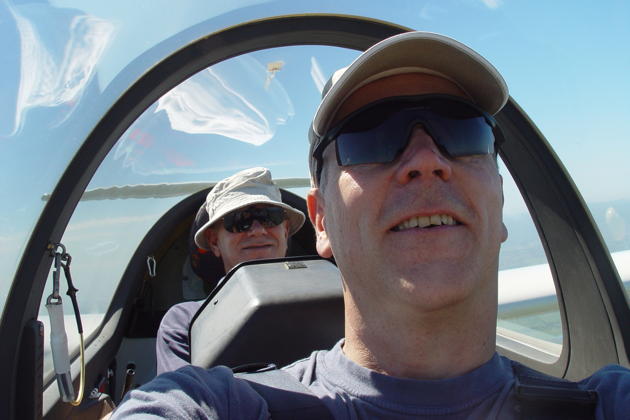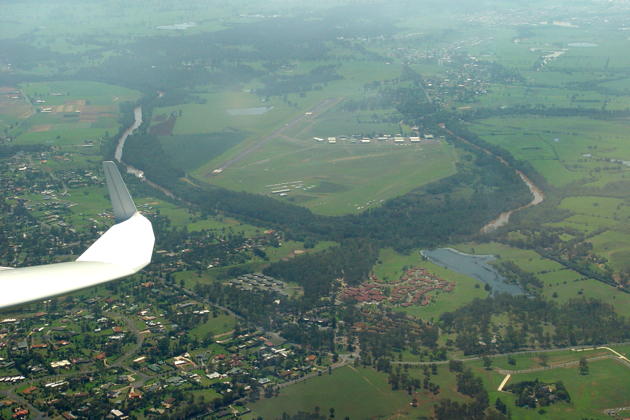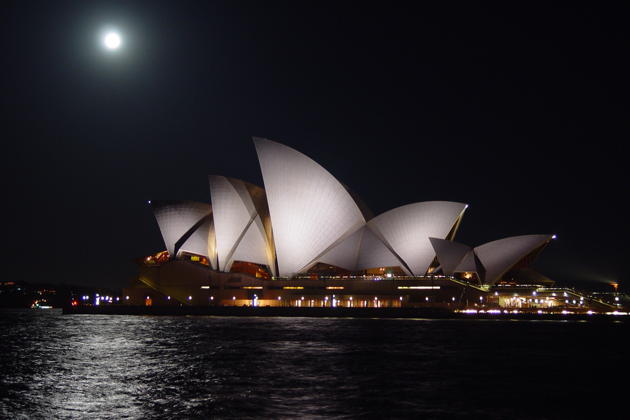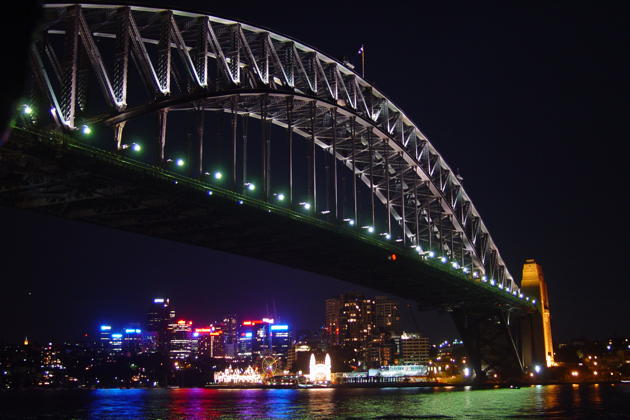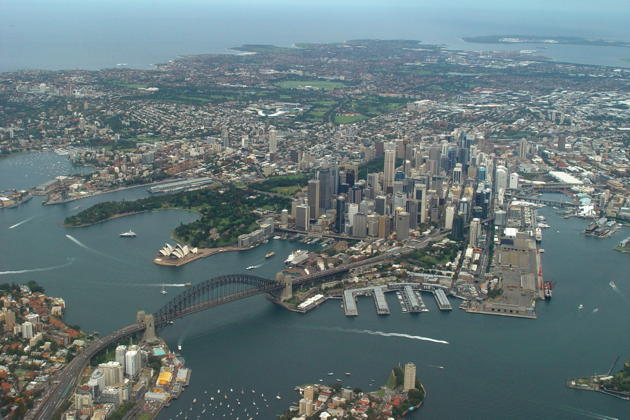FlightLog Archive
∟Aircraft Flown
DG-1000 Soaring in Australia - Mar 2007
I was scheduled for a week and a half of work in the Sydney, Australia area, with a free weekend in the middle, so I searched the web for some available soaring opportunities. I found out that the Southern Cross Gliding Club was located only about 60 km southwest of Sydney, and they had a new DG-1000 available.
I wrote an e-mail to the club, and got a quick response that I was welcome to visit either weekend day, and could work out availability with the club members present that day. The Southern Cross Gliding Club is located at the Camden airport, in a rural setting off the M-5 Motorway, heading southwest out of Sydney.
The club members were moving a number of the club's sailplanes out to their launching area when I arrived, and the club's operations were being set up out of the club's 'Pie Cart', or mobile operations office. I was introduced to Dean Ward, who was one of the club instructors for the day. It was a gorgeous, blue day in the mid-80's, so the club members were already lining up for flights. The DG-1000 only had a couple of takers, however, so I got in the queue to have a DG-1000 local area orientation.
Dean Ward and I reviewed the local area map and procedures, and I talked over my recent DG-1000 flight experience. There were a few tantalizing cu's forming in the far distance, but a blue hole was still holding over the Camden airfield. The DG-1000 came available, so Dean and I jumped in and quickly launched behind one of the three Pawnees of the Southern Cross Gliding Club. I climbed in the low tow position, enjoying the normal smooth flight controls of the DG.
Since it was looking pretty stable, I decided to take a 4500-foot tow to be able to get a good view of the local area. The Camden airfield is situated in a loop of the Nepean River, and the surrounding terrain was looking very green, after three weeks of recent rains in the Sydney area. We continued towing to the west, and after getting off tow, continued to the west toward the Blue Mountains, which are actually hills with some impressive gorges through the center. I got a far-off view of the Three Sisters, an impressive rock formation.
The Southern Cross Gliding Club's DG-1000 is as finely tuned and smooth as the four other DG-1000s I've been able to fly, and even with only bumps of lift, I was able to enjoy the sights of the Blue Mountains to the west and the skyline of Sydney in the ocean haze to the far northeast. I flew a few wingovers and lazy 8s just for the enjoyment of this fine sailplane, and then headed over the town of Camden to try to work some bits of lift with a few other local sailplanes. Although I was able to get a few bumps that seemed to be set up in a bit of a shear line, the best I got was a few turns of 100 FPM up.
I discussed normal turnpoints and altitudes for the pattern, and Dean noted that I should just "fly what looks right", as folks are taught to recognize good position and height to any available field, in preparation for cross-country. I agreed with that style of training, and set myself up for a right pattern to the large grass area aligned with runway 6. I had a smooth descent over trees and a nice landing right on the designated touchdown spot, with a short rollout.
Dean signed off my local area orientation, and I was able to talk himself into a walkaround of a club member's personal Duo Discus XT. Unfortunately, the Duo next went back to its trailer, so I wasn't able to arrange a flight that day. The Southern Cross Gliding Club also has a new DG-303, similar to Brian Hood's fine ship, so I hope to fly it during a future visit down under.
Back in Sydney for the evening, I was able to get some awesome views of the Sydney harbor area at night, with a glorious moonrise over the Opera House, and beautiful reflections under the Sydney Harbor Bridge. Departing Sydney on a United 747 a few days later, we made a climbing right turn from runway 34L, providing a beautiful panorama of the Sydney downtown and harbor area as we climbed out en route to LAX.
 KASPRZYK
KASPRZYK